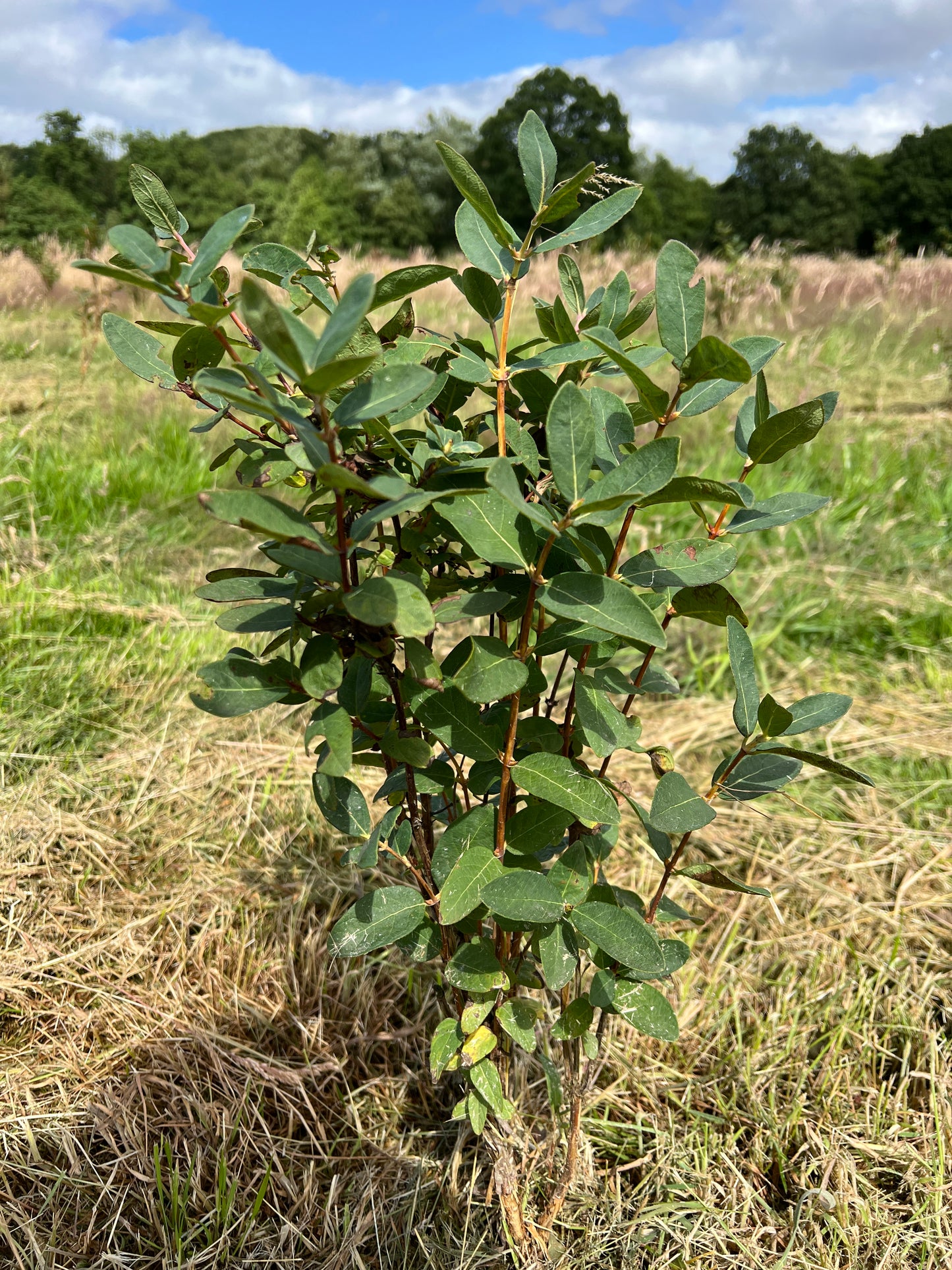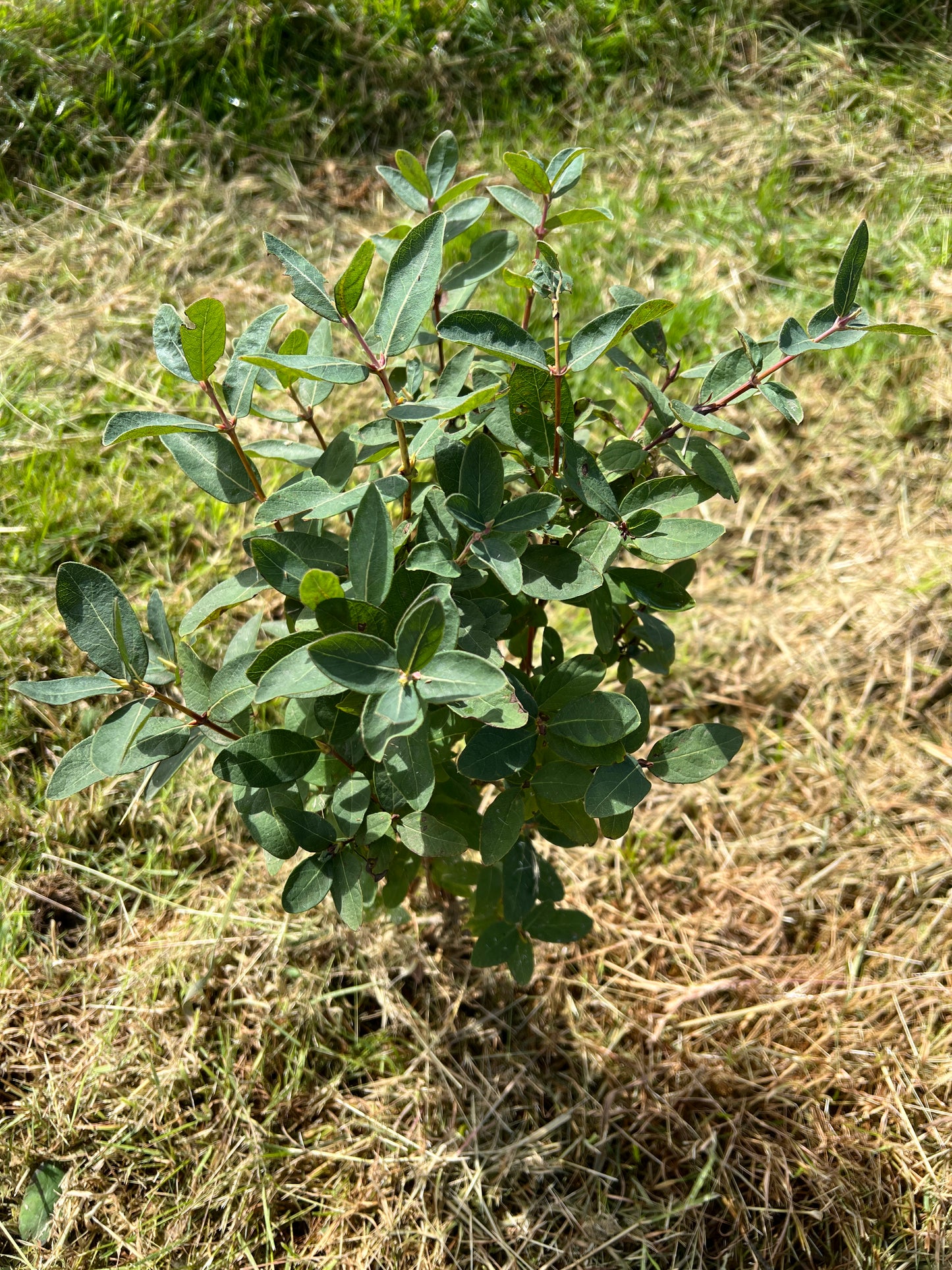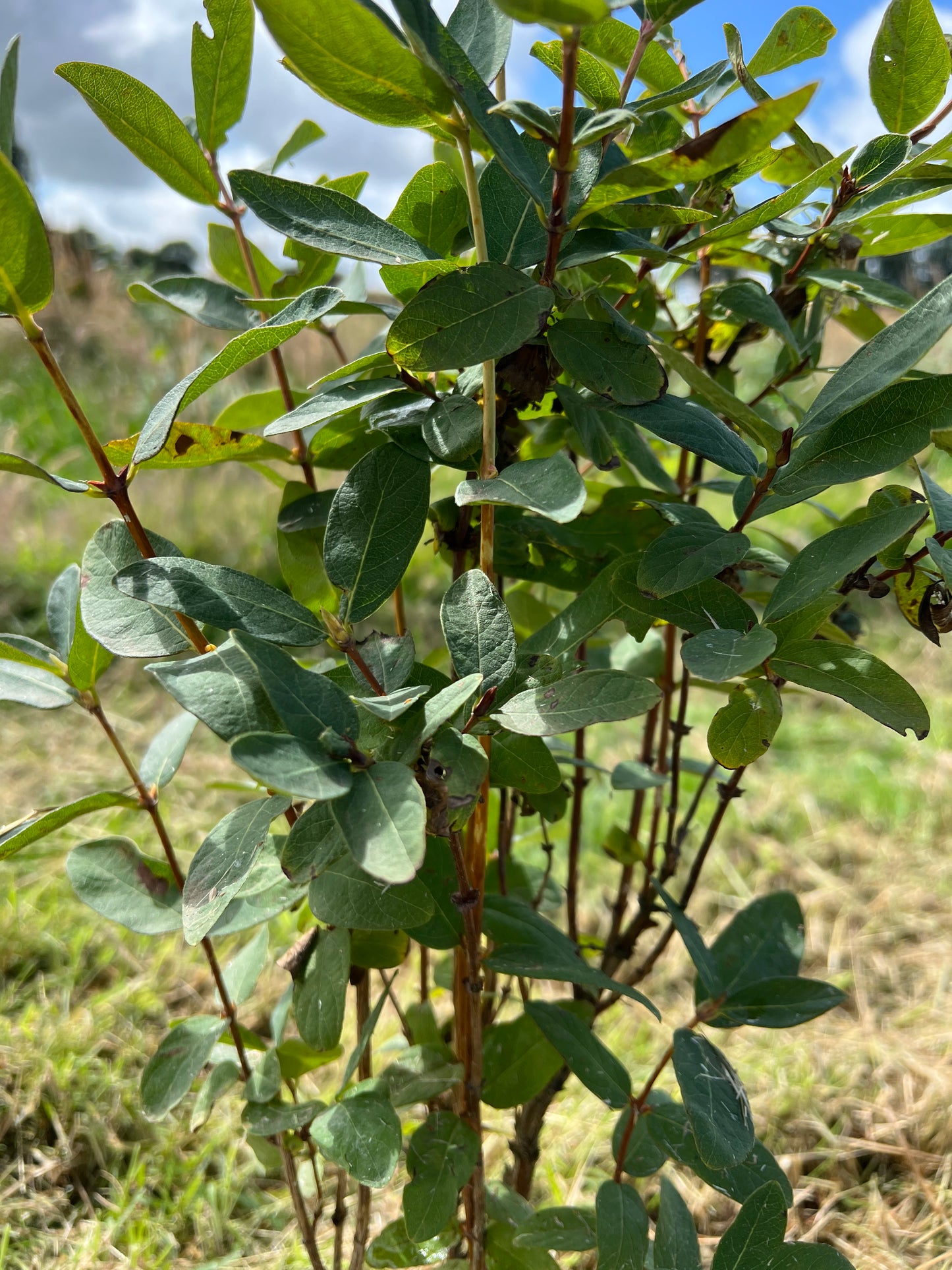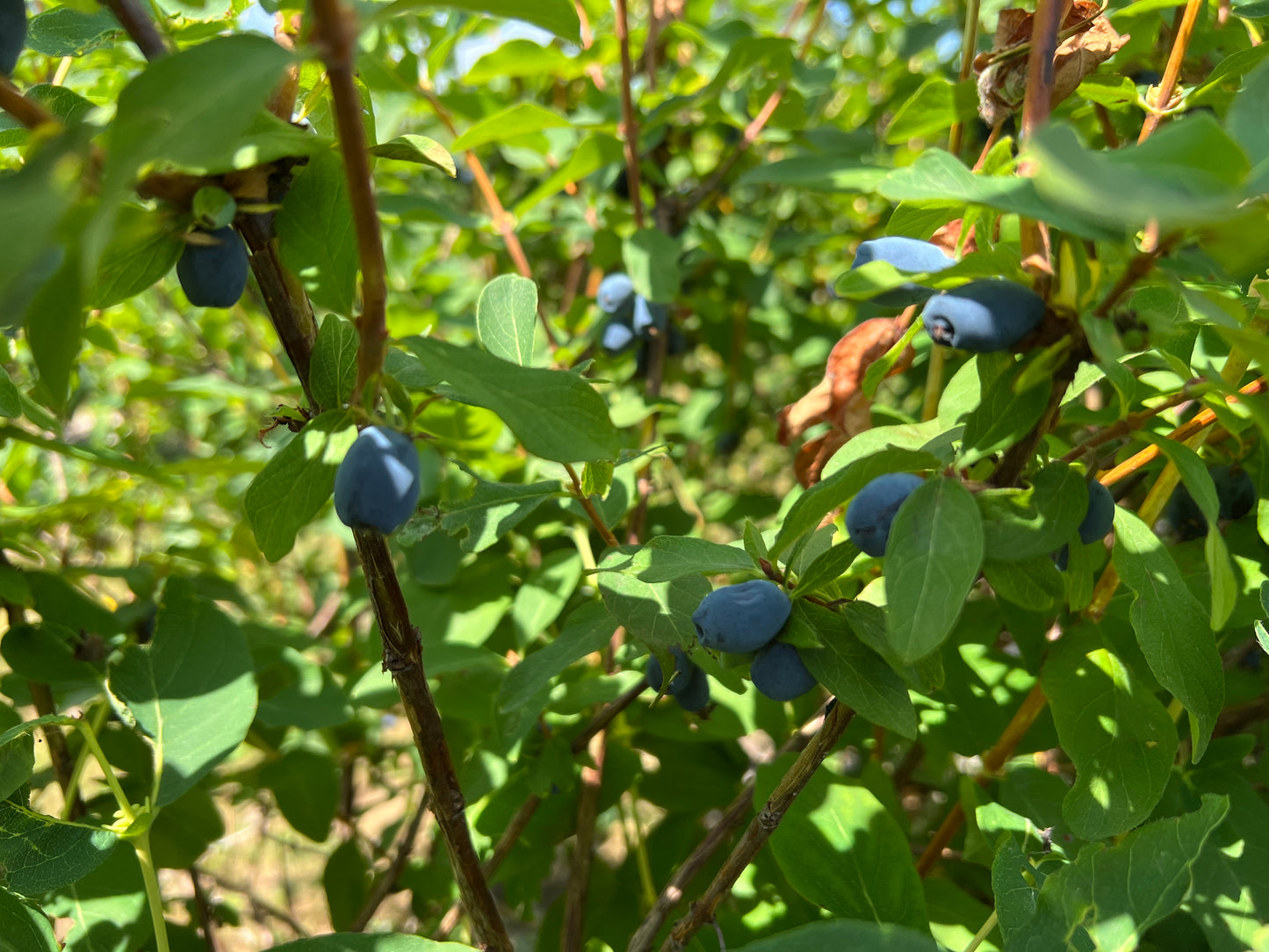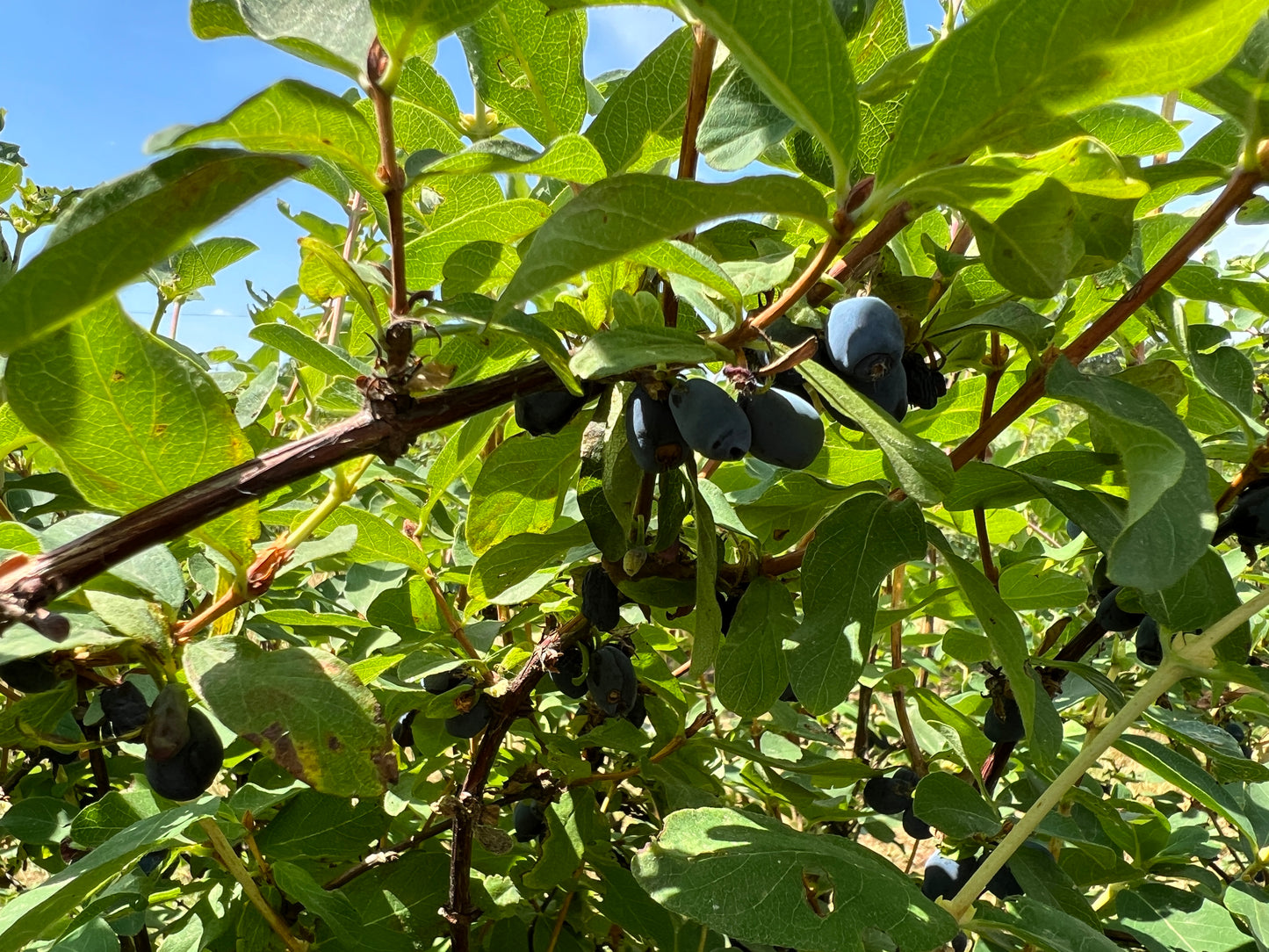Norseman Nutrition
Honeyberry plant (Lonicera caerulea)
Couldn't load pickup availability
Our Honeyberry plants have been organically grown on our farm and are now available to purchase, why not grow your own? The Honeyberry Plant (also known as Lonicera caerulea) is a lesser-known berry which are native to Siberia, northern China and northern Japan where they were widely harvested and is a member of the Honeysuckle family. Honeyberries are fruit of forms of the honeysuckle Lonicera caerulea, also known as blue honeysuckle or edible honeysuckle. The fruits are very similar to blueberries in taste and looks, and can be eaten raw or used in jams and jellies.
The Honeyberry plant you purchase will be dug out of our organic field on our farm, placed into a pot and shipped in careful packaging. Plant shown is indicative of product, size of plants 30-50cm. All photos from our farm fields.
Product Description
Honeyberry plants are easy to grow, are very hardy and do not generally suffer from any pest and disease. We offer delicious organic Honeyberry plants from our farm, which are well suited to UK climates, being incredibly hardy and resistant to colder temperatures. Ideally planted in well drained soil that is rich in organic matter; however most soils are suitable, they do not mind acidic or alkaline soil which makes great alternative for people who struggle to grow blueberries. Plants will reach a mature height and spread of 1.2m. Our plants are 2-3 years old.
Yellow flowers start in late Winter/early Spring, followed by the ripe blue berries in early Summer. These can be eaten as they are, used for other culinary purposes such as jams, cakes or dried for eating later.
Planting Notes
| Planting |
Plant on a site in full sun to help increase fruit yield as the sun will ripen the wood. Dig a hole approx. 50cm deep & wide, line the bottom of the hole with fresh compost or well-rotted manure. If using manure, also ensure it is well mixed in with the soil. Replace the soil by gently treading it back in and it is a good idea to apply a general purpose fertiliser mixed in with the soil at this time, ensuring the plants get the best possible start. Water in well. |
|---|---|
| Soil Type | Well drained, fertile soil |
Growing tips/onward care.
Water regularly during the growing period and make sure that the soil is not allowed to dry out. Plant approx. 1.5m apart in a row if needed. A yearly application of a balanced fertilizer such as blood, fish and bone in the spring is all they need. Too much feed will produce lots of lush green growth and not many flowers and fruit. A mulch of well-composted organic matter will help retain moisture and improve soil conditions.
